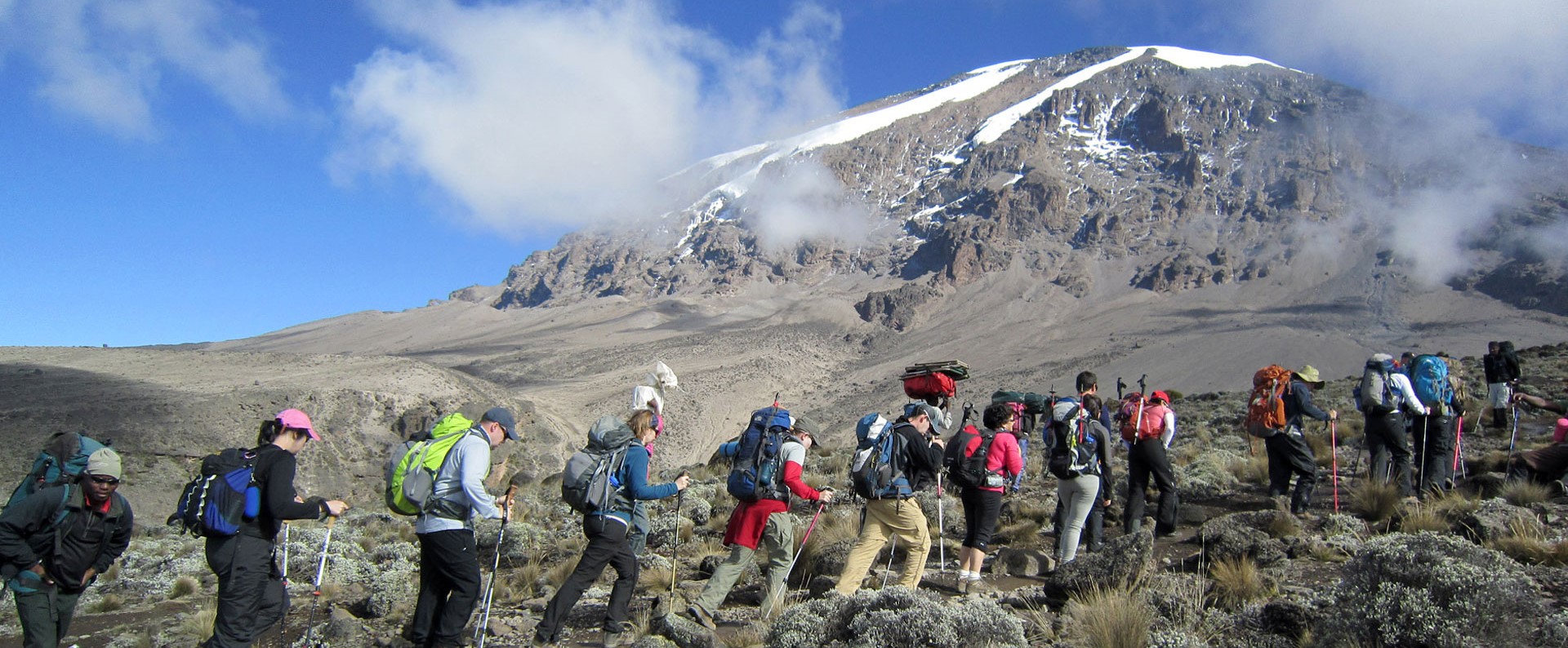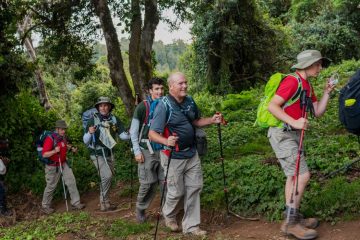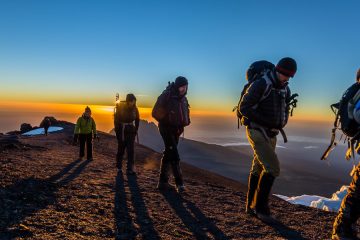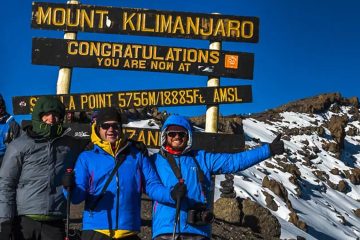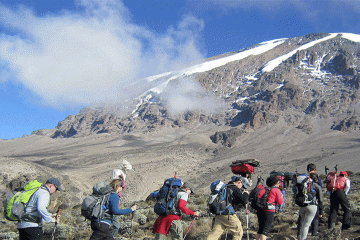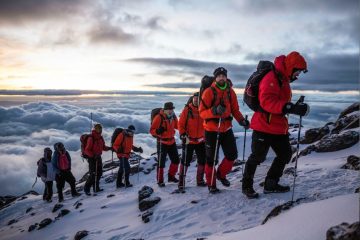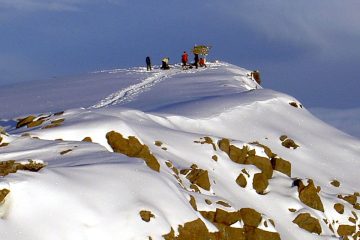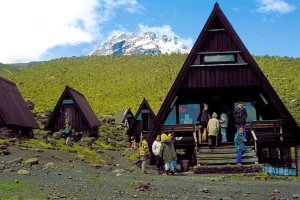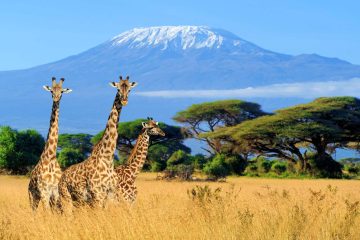Climbing Mount Kilimanjaro is a thrilling adventure in Tanzania. As Africa’s highest peak, it offers a range of routes and challenges, each with its unique charm. Trekkers can choose from popular routes like Machame, Marangu, or Lemosho, each with varying landscapes and difficulty levels. The climb typically takes 5 to 9 days, with diverse ecosystems to explore, from lush rainforests to arid alpine deserts. Reaching the summit, Uhuru Peak, at 5,895 meters (19,341 feet), is a challenging but rewarding experience, making Kilimanjaro a must-do for adventurous travelers seeking breathtaking vistas and personal achievement.
Mount Kilimanjaro Packages
Mount Kilimanjaro Day Hikes | Tanzania
3 Day Mount Kilimanjaro Short Hike | Marangu Route
7 Day Kilimanjaro Climbing Machame Route Itinerary & Tour
7 Day Kilimanjaro Trekking Tour | Lemosho Route – Prices
6 Days Climbing Kilimanjaro Marangu Route
6 Days Rongai Route Kilimanjaro | 95 Summit Success
5 Days Marangu Route Kilimanjaro Itinerary | Prices
6 Day Kilimanjaro Trekking Machame Route
Mount Kilimanjaro often referred to as the “Roof of Africa,” stands tall in Tanzania, inviting adventurers from across the globe to embark on a journey of a lifetime. This dormant strato volcano, the highest peak in Africa, offers a diverse range of climbing routes, each with its unique charm and challenges. In this comprehensive guide, we will delve into the intricacies of Mount Kilimanjaro climbs, providing insights into the routes, preparations, experiences, and the rewards that await those who dare to conquer its summit.
The Enigmatic Kilimanjaro
Before setting foot on this iconic mountain, it’s essential to understand the allure of Kilimanjaro. Rising to an impressive 5,895 meters (19,341 feet) above sea level, Kilimanjaro boasts five distinct climate zones, offering a captivating journey through lush rainforests, heath and moorland, alpine desert, and arctic conditions at the summit. The mystique of Kilimanjaro lies not only in its towering presence but also in its unique ecosystems and breath taking vistas.
Choosing Your Route
One of the first and most critical decisions you’ll make when planning a Kilimanjaro climb is selecting your route. Kilimanjaro offers several routes, each with its characteristics:
Machame Route: Known as the “Whiskey Route,” it’s celebrated for its stunning scenery and a more gradual ascent.
Marangu Route: Dubbed the “Coca-Cola Route,” it offers hut accommodations and is considered the easiest but also the most crowded route.
Lemosho Route: Offering diverse landscapes and low traffic, the Lemosho Route is an excellent choice for those seeking solitude and scenic beauty.
Rongai Route: Approaching Kilimanjaro from the north, it’s known for its quiet and less-traveled paths.
Northern Circuit Route: The longest route, allowing for excellent acclimatization and panoramic views.
Duration and Acclimatization
Climbing Kilimanjaro is not a race; it’s a gradual ascent to ensure proper acclimatization to the high altitude. The duration of your climb typically ranges from 5 to 9 days, depending on your chosen route and itinerary. Longer treks increase your chances of reaching the summit safely.
Weather and Best Times to Climb
Kilimanjaro experiences two primary climbing seasons: December to March and June to October. These months are characterized by drier and more stable weather conditions, making them ideal for climbs. It’s crucial to plan your climb during these seasons to enhance your chances of success.
Physical Preparation
Climbing Kilimanjaro doesn’t require specialized mountaineering skills, but you should be in good physical condition. Cardiovascular fitness and endurance are essential, as you’ll be trekking for several hours each day at high altitudes.
Guides and Porters
A licensed guide is a mandatory requirement for Kilimanjaro climbs. These guides are not only knowledgeable about the terrain, but they also play a crucial role in ensuring your safety. Porters assist by carrying equipment, food, and supplies, allowing you to focus on the climb.
Permits and Regulations
To preserve the natural beauty and environment of Kilimanjaro, permits are required for all climbers. It’s essential to obtain these permits well in advance and adhere to the regulations set by Kilimanjaro National Park.
Summit Night
The summit night on Kilimanjaro is a challenging endeavor. Climbers usually begin the ascent to Uhuru Peak, the highest point on the mountain, around midnight. This is to reach the summit at sunrise, not only to witness a breath taking sunrise but also to ensure a safe descent before adverse weather conditions set in.
The Rewarding Views and Achievement
Reaching the summit of Kilimanjaro is a life-changing experience. As you stand atop Uhuru Peak, you’ll be rewarded with sweeping panoramic views that stretch as far as the eye can see. It’s not just a physical accomplishment but a profound personal achievement, a testament to human determination and resilience.

